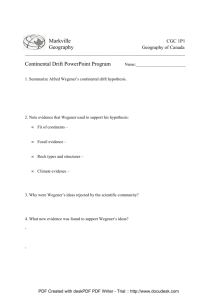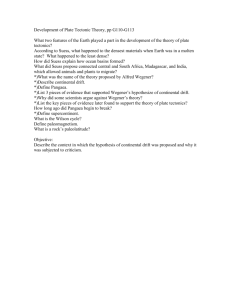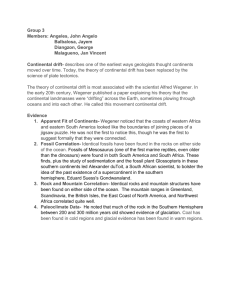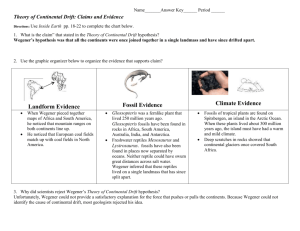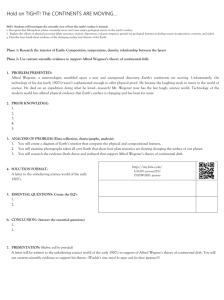Exam II Study Guide for GEOLOGY 10
advertisement
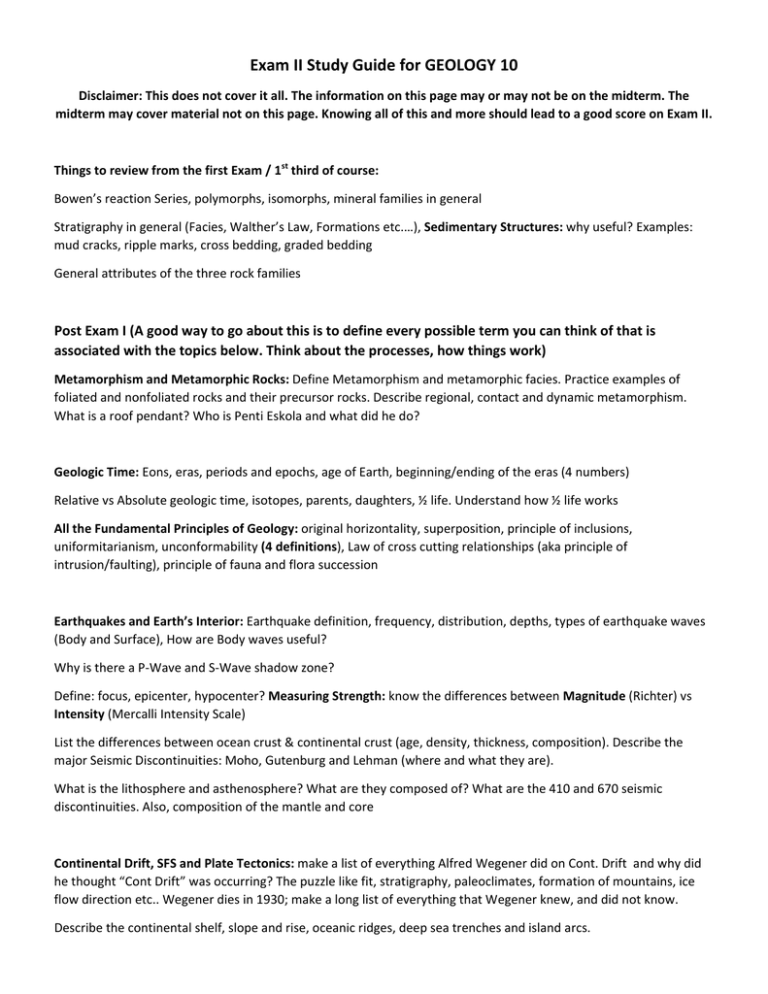
Exam II Study Guide for GEOLOGY 10 Disclaimer: This does not cover it all. The information on this page may or may not be on the midterm. The midterm may cover material not on this page. Knowing all of this and more should lead to a good score on Exam II. Things to review from the first Exam / 1st third of course: Bowen’s reaction Series, polymorphs, isomorphs, mineral families in general Stratigraphy in general (Facies, Walther’s Law, Formations etc.…), Sedimentary Structures: why useful? Examples: mud cracks, ripple marks, cross bedding, graded bedding General attributes of the three rock families Post Exam I (A good way to go about this is to define every possible term you can think of that is associated with the topics below. Think about the processes, how things work) Metamorphism and Metamorphic Rocks: Define Metamorphism and metamorphic facies. Practice examples of foliated and nonfoliated rocks and their precursor rocks. Describe regional, contact and dynamic metamorphism. What is a roof pendant? Who is Penti Eskola and what did he do? Geologic Time: Eons, eras, periods and epochs, age of Earth, beginning/ending of the eras (4 numbers) Relative vs Absolute geologic time, isotopes, parents, daughters, ½ life. Understand how ½ life works All the Fundamental Principles of Geology: original horizontality, superposition, principle of inclusions, uniformitarianism, unconformability (4 definitions), Law of cross cutting relationships (aka principle of intrusion/faulting), principle of fauna and flora succession Earthquakes and Earth’s Interior: Earthquake definition, frequency, distribution, depths, types of earthquake waves (Body and Surface), How are Body waves useful? Why is there a P‐Wave and S‐Wave shadow zone? Define: focus, epicenter, hypocenter? Measuring Strength: know the differences between Magnitude (Richter) vs Intensity (Mercalli Intensity Scale) List the differences between ocean crust & continental crust (age, density, thickness, composition). Describe the major Seismic Discontinuities: Moho, Gutenburg and Lehman (where and what they are). What is the lithosphere and asthenosphere? What are they composed of? What are the 410 and 670 seismic discontinuities. Also, composition of the mantle and core Continental Drift, SFS and Plate Tectonics: make a list of everything Alfred Wegener did on Cont. Drift and why did he thought “Cont Drift” was occurring? The puzzle like fit, stratigraphy, paleoclimates, formation of mountains, ice flow direction etc.. Wegener dies in 1930; make a long list of everything that Wegener knew, and did not know. Describe the continental shelf, slope and rise, oceanic ridges, deep sea trenches and island arcs. Define SFS and list all the proofs or outcomes that we covered. How do we know SFS is a geologic process? What is subduction? Define Plate Tectonics, leading and trailing edge margins. Describe the 3 major plate boundaries; be aware of examples on earth where each of the boundaries occurs. Draw a stratigraphic column of the outer shelf/slope off the east coast US from surface down to the mantle.
